Previous
You have to start somewhere: the flops by 4 star architects


Your dream house is one step away from you.
Subscribe to our newsletter and get 10% off orders of at least 100€!
Enjoy it and don’t miss out on our offers and updates.


Stefano Giovannoni and I have been sitting at his kitchen table for at least half an hour. We’ve had a coffee each, and I’ve drunk a couple of glasses of water. Although he’s the one doing the talking. Our intermittent interview has turned into a conversation; at times a harangue, at other times a dissertation.

You and Jean Baudrillard - the writer you’ve often quoted - have given me a pleasantly sleepless night. I noted down this claim by the French philosopher: The driver of capitalism is not production, it’s consumption. Is this your Baudrillard?
Yes, consumption and goods. Qeeboo objects are far more invasive, they have a much stronger appeal than items of Good Design: and this property should not be underestimated. They’re much more of a product, they’re consumer goods. They’re media products.

Today we’re living in a media world, a scenario in which the major forms of communication are Facebook and Instagram: we need objects that can communicate on these platforms, and it gives me pleasure when Qeeboo products appear in photos posted by the people who buy them. Everyone wants to show how they’ve interpreted the Rabbit Chair. And so the Rabbit Chair is no longer an object that’s closed in on itself, but leaves room for one or more interpretations which are utterly dependent on the consumer.
I’ve seen the video of the rabbits on the escalator. The video is mesmerising but, besides the product itself, what message are you conveying?
It’s obvious that you couldn’t make that video with a couple of Magistretti chairs, right? Because it would be impossible to understand the meaning. But if you put two rabbits on an escalator, you’ve already created a story. It's not the story of two chairs, it’s the story you imagine.
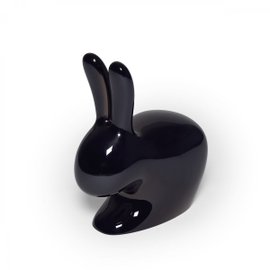


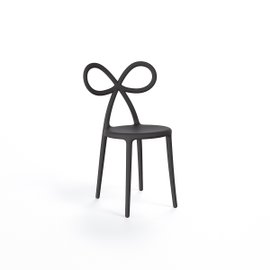
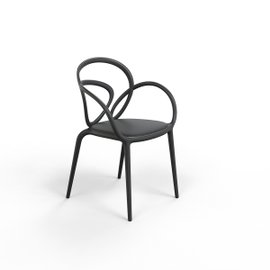

Cultural and commercial production: it’s an issue everyone avoids, except you. But I don’t understand whether you believe the cultural and the commercial are separated by a line that can remain stable, or if you think this division no longer applies today?
In my view, I’ve always tried to combine the two aspects. Most designers see a contradiction between their language and the expression of commercial aspects. I try from the outset to make sure there’s no such conflict, and that the two aspects work together and advance at the same pace. This determination of mine explains why I’ve made so many products that have been hugely successful top sellers.

I've always worked to trial products, in order to understand what they actually were: not the appeal I had in my head, but what they were saying to the public.
Even in what they say, it always comes back to the person, the individual. To the consumer, since we’re talking about goods.
Yes, because that’s what really interests me. The concept of goods is a cynical one, and the fact that I design a rabbit or another appealing object, that winks an eye at the consumer, is something that really winds up the self-righteous Good Designers. When my first family of products for Alessi came out - which turned out to be enormously successful - the entire design world, all the holier-than-thou minimalists raised their hackles that Alessi should do such a thing.

So were you and Alessi creating, or listening?
Both. But the public buying the products - and this should be clearly stated - is the best endorsement.
The world of consumerism has become highly differentiated, which means there’s room for everyone. It’s implicit in an advanced society that there should be so many faces, so many languages, and that identities can be found in a wide spectrum of possibilities. What’s the point of everyone dressing like a monk and tearing things down for the sake of those who have least? This a concept that’s slightly ridiculous nowadays, it’s an anachronism in the consumer world, the world we all need in order to survive in this ever-changing society.
Giovannoni’s house is pleasantly quiet. The window next to the long table where we’re sitting looks onto an indoor courtyard: wooden decking and walls covered in flowering jasmine, a Rabbit Chair in the centre. The busy Qeeboo offices are on the floor below. Upstairs, on the roof terrace, my colleagues are doing a photoshoot with the new products: Killer the shark umbrella stand and Kong the gorilla lamp. Perhaps I now know the answer (or the question) that’s closest to his heart: what’s the point of design if it doesn’t communicate?
Kong, the great gorilla. Why?
Before Kong, I was always a little wary of working between an object’s function and its identity. I’d never have dared to make the Moooi horse with the lamp on its head, as Front did - and they’re part of Qeeboo. I’d buy it, but as a design it was a bit too simple, right on the border with the world of gadgets. Conceptually, it’s a slightly weak operation.
So the difference lies in bringing two things together and creating a third? If there’s no synthesis, there’s no novelty?
Today I’ll do a cat, tomorrow a rabbit, the day after a pig.
Meanwhile, in your work there’s a rabbit, then a chair, and finally a third thing: the Rabbit Chair.
Exactly: my piece isn’t a sculpture of a rabbit, it’s a rabbit-chair. Maybe I went a bit further with the gorilla; the torch is an extension of the gorilla’s body and it gives the product a functional purpose.

Maybe with the internet and direct contact between designer and consumer, some of all this might be communicated. I’d like to ask you what you think of design on internet, but I also want to ask you what design was like before internet.
Design before internet….yesterday I went to a lecture by Roberto D’Agostino at the Triennale, and afterwards we came here with him and some other friends. All evening the conversation revolved around the new communication mediums, and I was thinking about the possibilities offered by the internet for Qeeboo. On the one hand the internet is extreme transparency: it’s a means of seeing the world and finding what you’re looking for. On the other hand, there are so many obstacles: there’s a viscosity in the system, an entropy, which renders the transparency opaque.

And where’s the greatest resistance to be found?
We’re still a very long way from the flat, transparent world described by Thomas Friedman. In order to gain visibility, firms have to take part in the design sector fairs, which involves a huge outlay of energy. This year, Qeeboo has appeared in two venues at the Salone del Mobile, not to mention other minor sites around the city. Then there’s Maison Objet. Then Shanghai. But we have to go beyond all that. It doesn’t match up with the logic of the internet’s ubiquity and transparency as a medium.
Whose fault is that?
The way firms that operate online - even e-commerce sites - act in relation to both producers and consumers is the same as their way of operating in retail, with identical multipliers, and the only difference is that instead of displaying the product, often all they do is show a picture of it. As yet there isn’t a new system yet. The internet opens the possibility of creating something completely different, but firms are based on the old retail system and their websites are still operating as shops.

If we could manage to reduce prices without insulting consumers with ridiculously discounted flash sales, prices could realistically fall substantially. Instead there’s a kind of hypocrisy: capture the consumer and, when the firm needs to, offer them the mirage of a 50% discount. It’s a backwards way of doing things. It's nothing new.
With PIANOPRIMO, LOVEThESIGN aimed to create an alternative, a new way of discovering and communicating home design. Without excluding the tried and trusted methods - the showroom and the e-commerce site, the magazine and the website - now, one floor up from the LOVEThESIGN boutique, there’s a new magazine in which content and products are combined. Culture and commerce.
These are new opportunities. From a certain point of view, the internet represents the great revolution of recent decades, just as the printing press once was, and, later on, television. Technology creates prerequisites in the story of mankind that force innovation to leap forward: it's a question of small steps. Then there’s a whole system that has to be adjusted and dismantled. It’s not an immediate process, it takes time.
So in your view, the complexity of the real world has been dragged into the online world, and now we need to get rid of this complexity in order to effectively move forward?
Traditional firms and their connected and annexed system often curl up into a ball and create a protective barrier to hold onto what already exists, while with the internet there's the possibility of a shift in scale, in dimension, which in a more transparent world would make access easier for startups like Qeeboo. But I’m an optimist, change is on the way!
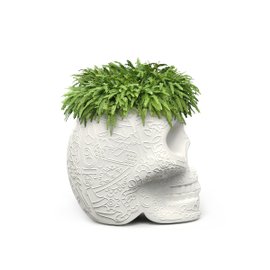
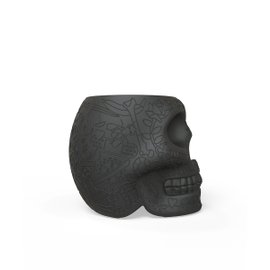
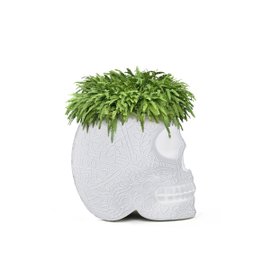
Kids
Qeeboo
Stefano Giovannoni
LoveTheSign @ OnBeauty by Cosmoprof
Kids
Home Accessories
Furniture
Nika Zupanc
Gifts
The best of Design
Tables & Chairs
White Design
LoveTheSign @ Gaudenzi
Italian Design
A game of opposites
Decor-Mania: looking for the right object for yourself
FRONTdesign
Home with a sea view
Studio Job
Home Accessories
Back to Work – Design Edition
Design icons
Textiles & Accessories
Outdoor
The Crazy Summer Mood: time to go outdoors

 Back to
Back to
Size*
Quantity*




